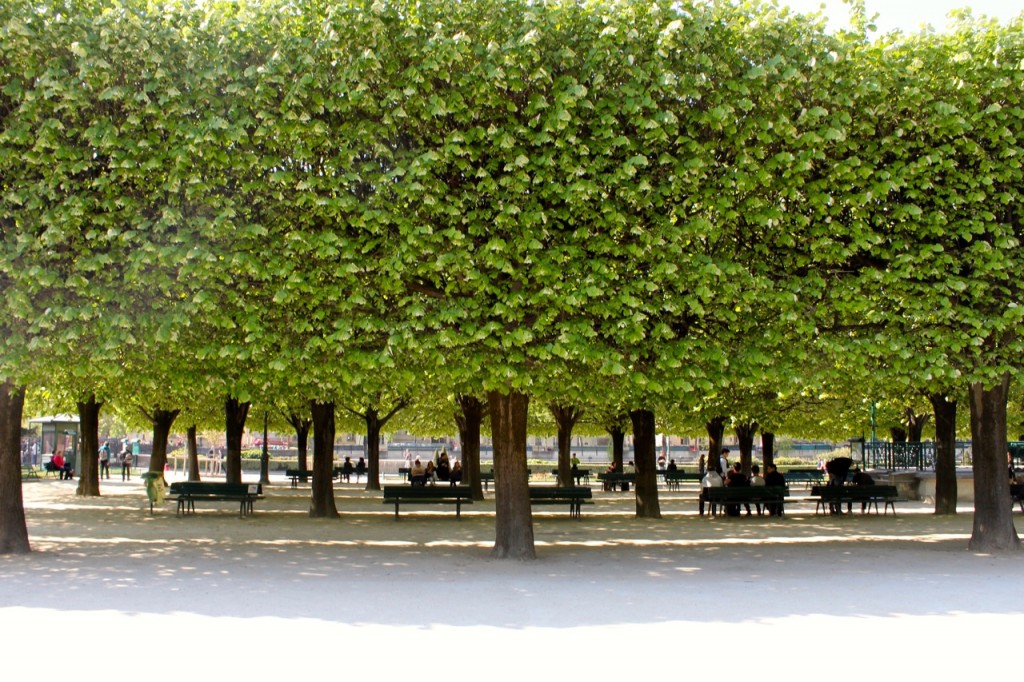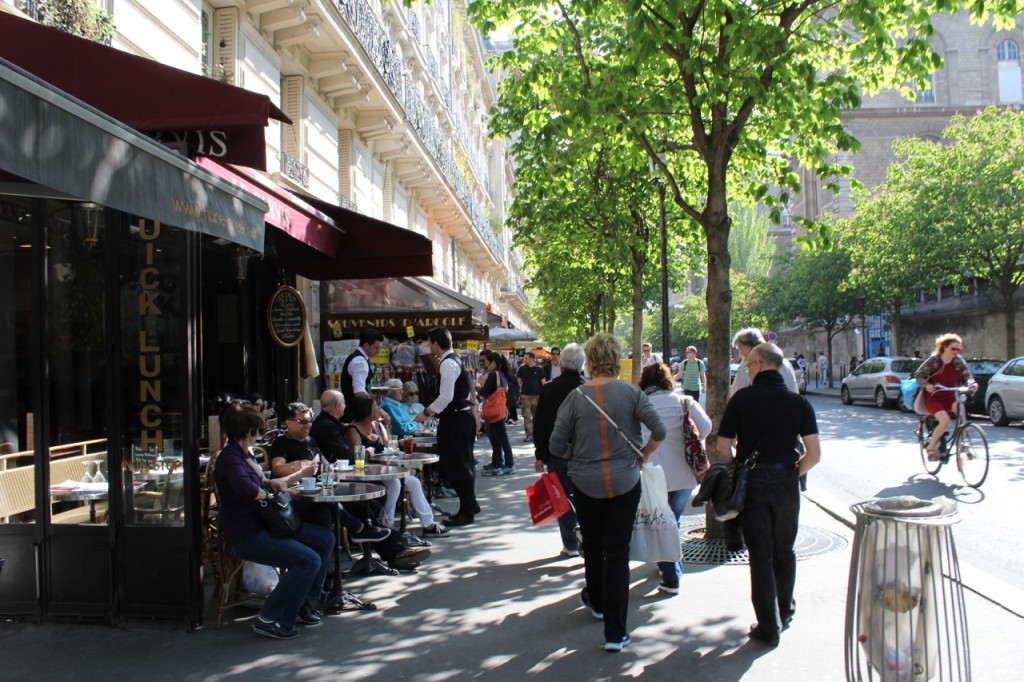April 27
Paris
Every now and then I will pause to convey impressions gleaned from this journey.
In this blog post, I am putting on my city planning hat.
It is virtually impossible to set foot in Europe without noticing the difference between how human settlements have evolved in the US and Europe. In the two countries we have visited so far, Spain and France, the difference is remarkable. Part of the difference is due to timing. Most of our cities came into their own after the automobile became king. European development patterns were set a century or more earlier. Part has to do with culture and values, part with how countries treat property rights and part with the political system. Whatever the reason, cities are different in Europe and the US:
- Suburban sprawl is mostly non existent in Spain and France. The city stops and farmland starts. There are boundaries and edges. In Valencia and Madrid we saw no single family dwellings at all. Apartment houses extend for miles and then they stop and farmland begins. While some outlining communities in Paris have single family housing, yards are generally small and compact; and there is nothing equivalent to the sprawling suburbs we have in the US where houses with large yards are predominant.
- In part because of land use development patterns, public transportation is more available, less costly to consumers (and is more heavily subsidized), and more reliable. Every train we have taken has been on time. The bullet trains go twice the speed of our fastest trains. Because they are fast, reliable, efficient, and pleasant to ride, they are used heavily. Europe could not function without its trains. The same is true for local transportation. We have one of the best local public transportation systems in the nation in Washington; yet despite being much newer, Metro is no better than the systems in Madrid or Paris. And most US cities are not even close.
- Housing in cities is very different in Europe and the US. In the Spanish and French big cities the vast majority of people live in apartments where the typical unit is much smaller than in the US. One result of the higher density/ smaller unit development pattern is the need for more outdoor community space—parks, plazas, and community open space—and the cities we have visited so far all have it. A bi product of high density development is that the European cities are more vibrant and dynamic than American cities.
- Neighborhoods are different. There are sections of Paris, Madrid and Valencia that are better than others. Some are less expensive and cater more to a working class population. But on the whole there is nothing that we have seen that corresponds to our sharp division between rich and poor neighborhoods, and the presence of slums and ghettoes that have defined American cities for over a century.
At the same time there is a graffiti problem in France and Spain that exceeds anything I have seen in the US. I have asked a number of people about this and have gotten the same general response, which is that it used to be even worse and people don’t like it, but you can only do so much. I am still trying to figure this one out.
- There is virtually no advertising or billboards once you get out of cities, towns and villages. The pastoral beauty of the countryside is preserved—no junk to speak of, though graffiti is still present along the railroad tracks and on some shuttered storefronts. When I think of the difference between the landscapes on the country roads in Europe and the US, I shake my head in dismay.
- There is a fundamental cultural and philosophical divide as to how we tackle problems and challenges related to housing and urban development. It basically boils down to this: do you consider the issues of housing and urban development to be more in the public realm and considered a public good to be regulated and subsidized accordingly? Or do you believe that housing and land use are private goods, not to be meddled with by bureaucrats and generally left for the Invisible Hand of capitalism to address? Of course, there is a continuum. Europe tends to favor the public role, the US the private role. The results of the two approaches seem pretty apparent as we travel via train from one European town to the next.
So our travel so far underscores what I suppose most Americans realize as they travel through Europe: that there are very big differences between how and where people people live in Europe versus the US. We have much to learn from European countries. There are also significant environmental implications since higher density developments with better public transportation systems means less reliance on the car, less gasoline use and lower emissions. There are also public health implications. People walk a lot more and they are not as fat as in the US.
On the whole, in my view in the US we have done a pretty poor job of it. The movements of New Urban Urbanism and Smart Growth in the US are a response to our failures related to sprawl, affordable housing, and inefficient and wasteful land use. We should have paid more attention to Europe.
More on this topic will follow as we tour Germany, Poland, Russia, Mongolia and the big boy of them all: China.


We are so lucky that both of you can make such enlighted, professional comments.
About graffiti: I should have taken you to the graffiti celebration we had while you were here. They are considered an art form, an expression of some of young people’s culture. We encourage them to make beautiful decorations and to invite us to watch their street dances. And we are thankful they are creative rather than destructive. But of course, the situation is different in public transportation, especially in big cities.
Your comments about tides and the absolute necessity here to sail according to whether it is going up or down made me realize that it is not this way everywhere. There are so many different types of beauty in this world! and your blog will continue unfolding them for us.
Great points,Martine!
If you want to move to Europe, I suppose we can go with you.